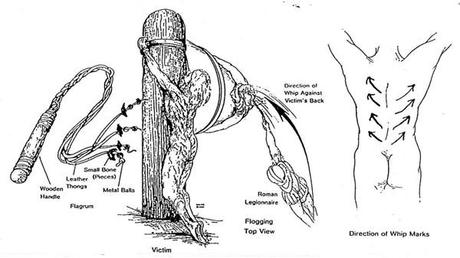Introduction In recent years, the crucifixion of Jesus Christ(as) has stimulated considerable interest. The inspiration received from the masterpiece of the Promised Messiah, Hadhrat Mirza Ghulam Ahmad(as), Jesus in India, stimulated this author to conduct an interdisciplinary investigation on the circumstances surrounding the crucifixion and to present a historical-cum-medical accurate account as to why Jesus Christ(as) went into a state of swoon and the circumstances that led to his recovery, and to explore the differential diagnosis of other clinical conditions put forward by doctors. There is a range of evidence on the process of crucifixion in literature. However, the credibility of any discussion will be determined primarily by the credibility of the source material. For this ‘theory’, the source material includes the extensive and detailed descriptions of the process of flogging and crucifixion found in the New Testament Gospels,[3] and contemporary Christian and non-Christian authors.[14] The interpretations of modern writers, based on the knowledge of science and medicine, may offer additional insight into this. Jesus Christ(as) was arrested past midnight at Gethsemane and taken to the high priest where he was found guilty of blasphemy. Soon after daybreak he was blindfolded, spat on the face and struck on the face with fists. There is no mention of any blood loss nor does blood loss of any significance occur with such an assault. Further, it is reasonable to assume that Jesus Christ(as) was in good physical condition.
 Scourging. Left, short whip (flagrum)
with lead balls and sheep bones tied into leather thongs. Center left, naked
victim tied to flogging post. Deep stripe like lacerations were usually
associated with considerable blood loss Center right, View from above, showing
position of lector. Right superolateral direction of wounds.
Read more »*This blog is completely unofficial and in no way represents Islam Ahmadiyya or the views of anyone except the author themself.*
Scourging. Left, short whip (flagrum)
with lead balls and sheep bones tied into leather thongs. Center left, naked
victim tied to flogging post. Deep stripe like lacerations were usually
associated with considerable blood loss Center right, View from above, showing
position of lector. Right superolateral direction of wounds.
Read more »*This blog is completely unofficial and in no way represents Islam Ahmadiyya or the views of anyone except the author themself.*

